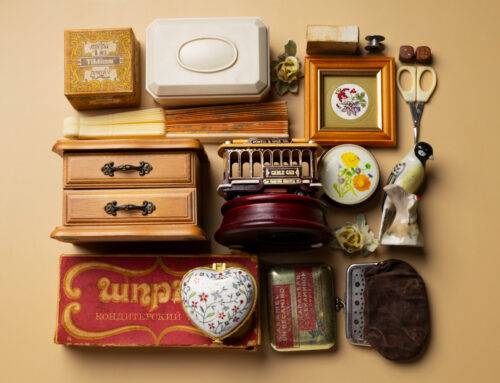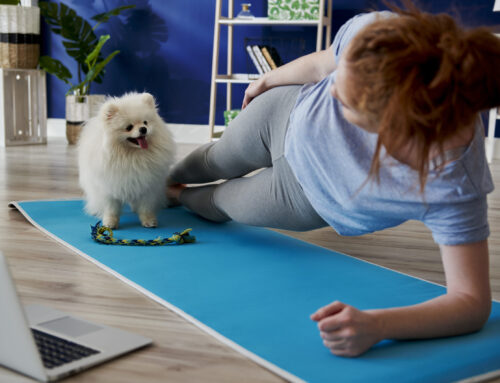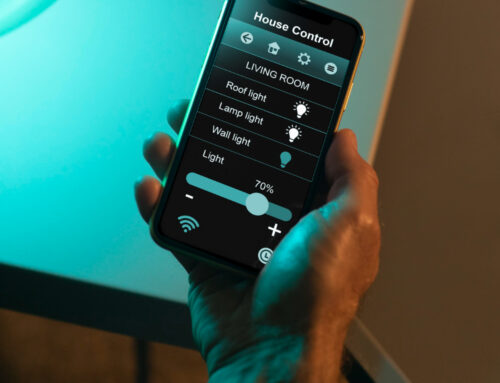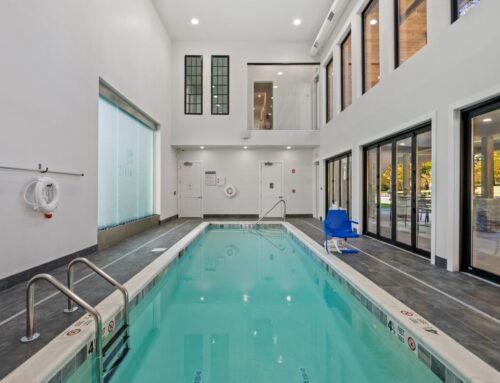Create a Comfortable Space for You and Your Furry Friend with These Easy Apartment-Friendly Tips
 Living in an apartment with pets can be a delightful yet challenging experience. Many pet owners face the dilemma of limited space, noise restrictions, and the need to keep their homes clean and organized. The good news is that with the right strategies, you can create a harmonious living environment that caters to both your needs and those of your furry friends. This guide will provide you with practical tips and insights to ensure your apartment is a happy, pet-friendly home.
Living in an apartment with pets can be a delightful yet challenging experience. Many pet owners face the dilemma of limited space, noise restrictions, and the need to keep their homes clean and organized. The good news is that with the right strategies, you can create a harmonious living environment that caters to both your needs and those of your furry friends. This guide will provide you with practical tips and insights to ensure your apartment is a happy, pet-friendly home.
In this comprehensive guide, we will explore various aspects of apartment living with pets, including choosing the right pet for your space, creating a pet-friendly environment, and maintaining cleanliness and order. By following these tips, you can enhance the quality of life for both you and your pets, making your apartment a sanctuary for all. Whether you’re a seasoned pet owner or considering adopting a new companion, this guide is essential for navigating the unique challenges of apartment living.
As you read through this article, you’ll find expert advice, real-world case studies, and actionable insights that will empower you to make informed decisions. From selecting the right pet to optimizing your living space, we aim to equip you with the knowledge needed to thrive in an apartment setting with your beloved pets. Let’s dive in!
Choosing the Right Pet for Your Apartment
Choosing the right pet is crucial for a successful apartment living experience. Not all animals are suited for small spaces, and understanding your lifestyle and the needs of potential pets can help you make the best choice. For instance, larger dog breeds may require more space and exercise than smaller breeds or cats, which can thrive in more confined areas.
When selecting a pet, consider your daily routine and activity level. If you lead a busy lifestyle, a low-maintenance pet like a cat or a small dog may be ideal. On the other hand, if you have more time to dedicate to exercise and play, a larger dog could be a great companion. Additionally, think about the energy levels of the pet. Some breeds are more active and require regular outdoor time, while others are content to lounge indoors.
Another important factor is the pet’s temperament. Some pets are more adaptable to apartment living than others. For example, breeds known for their calm demeanor, such as bulldogs or Shih Tzus, can be excellent choices for smaller living spaces. Conversely, high-energy breeds like border collies may become restless and destructive if not given enough space to roam and play.
Finally, consider adopting from local shelters or rescue organizations. Many pets in need of homes are already accustomed to living in smaller spaces and can make wonderful companions. Plus, adopting a pet not only provides a loving home but also helps reduce the number of animals in shelters.
Key Takeaways:
- Choose a pet that fits your apartment size and lifestyle.
- Consider the energy levels and temperament of potential pets.
- Adopt from shelters to find pets already suited for apartment living.
Creating a Pet-Friendly Living Space
Once you’ve chosen the right pet, the next step is to create a pet-friendly living space. This involves making adjustments to your apartment that cater to your pet’s needs while ensuring your home remains comfortable and stylish. Start by designating a specific area for your pet, such as a cozy corner with a bed, toys, and food and water bowls. This not only gives your pet a sense of belonging but also helps keep their belongings organized.
Consider investing in pet-friendly furniture and decor. Look for materials that are durable and easy to clean, such as leather or microfiber, which can withstand scratches and spills. Additionally, choose rugs and carpets that are stain-resistant and can handle the wear and tear of pet life. If you have a cat, consider vertical spaces like cat trees or shelves that allow them to climb and explore without damaging your furniture.
Safety is another critical aspect of creating a pet-friendly environment. Ensure that any hazardous items, such as cleaning supplies or electrical cords, are stored out of reach. Use baby gates to restrict access to certain areas if necessary, and be mindful of plants that may be toxic to pets. By taking these precautions, you can create a safe haven for your furry friends.
Moreover, consider soundproofing your apartment to minimize noise disturbances. This is particularly important if you have a dog that may bark at sounds from the outside. Adding heavy curtains, rugs, and wall hangings can help absorb sound and create a quieter environment for both you and your pets.
Key Takeaways:
- Designate a specific area for your pet with their essentials.
- Invest in durable, pet-friendly furniture and decor.
- Ensure safety by storing hazardous items out of reach.
- Consider soundproofing to minimize noise disturbances.
Maintaining Cleanliness and Order
Keeping your apartment clean and organized is essential when living with pets. Regular cleaning routines can help manage pet hair, odors, and messes, ensuring a pleasant living environment. Start by establishing a cleaning schedule that includes daily, weekly, and monthly tasks. Daily tasks might involve vacuuming pet hair and wiping down surfaces, while weekly tasks could include washing pet bedding and deep cleaning carpets.
Invest in quality cleaning supplies designed specifically for pet owners. Look for vacuum cleaners with pet hair attachments, enzyme-based cleaners for accidents, and odor-neutralizing sprays. These tools can make a significant difference in maintaining a fresh and clean home. Additionally, consider using washable pet bedding and toys to simplify the cleaning process.
Another effective strategy is to implement a “no pets on the furniture” rule. While it may be tempting to let your pets lounge on the couch, this can lead to increased cleaning efforts. Instead, provide comfortable pet beds and blankets in designated areas to encourage your pets to relax there, keeping your furniture fur-free.
Lastly, grooming your pets regularly can significantly reduce shedding and dander in your apartment. Depending on the type of pet you have, establish a grooming routine that includes brushing, bathing, and nail trimming. Not only will this keep your home cleaner, but it will also promote your pet’s overall health and well-being.
Key Takeaways:
- Establish a cleaning schedule for daily, weekly, and monthly tasks.
- Invest in quality cleaning supplies designed for pet owners.
- Implement a “no pets on the furniture” rule to reduce cleaning efforts.
- Regular grooming can help minimize shedding and dander.
Expert Insights for a Harmonious Home
To further enhance your apartment living experience with pets, consider insights from industry professionals. Dr. Jennifer Coates, a veterinarian and pet care expert, emphasizes the importance of mental stimulation for pets living in smaller spaces. “Interactive toys, puzzle feeders, and regular playtime can help keep your pets engaged and prevent boredom-related behaviors,” she advises. Incorporating these elements into your daily routine can lead to a happier, more well-adjusted pet.
Additionally, pet trainer and behaviorist Karen Becker, suggests establishing a consistent routine for your pets. “Dogs and cats thrive on routine, and having set times for feeding, walks, and play can help them feel secure in their environment,” she explains. By creating a predictable schedule, you can reduce anxiety and behavioral issues, making apartment living more enjoyable for both you and your pets.
Real-world case studies further illustrate the benefits of these strategies. For instance, a family living in a small apartment adopted a rescue dog and implemented a daily routine that included structured playtime and mental stimulation activities. Over time, they noticed a significant decrease in destructive behaviors, leading to a more harmonious living environment. This case highlights the importance of understanding your pet’s needs and adapting your lifestyle accordingly.
Key Takeaways:
- Mental stimulation is crucial for pets in smaller spaces.
- Establishing a consistent routine can reduce anxiety and behavioral issues.
- Real-world examples show the positive impact of structured activities.
Apartment living with pets can be a rewarding experience when approached with the right mindset and strategies. By choosing the right pet, creating a pet-friendly environment, maintaining cleanliness, and incorporating expert insights, you can ensure a happy and harmonious home for both you and your furry companions. Remember, every pet is unique, and understanding their individual needs will lead to a fulfilling relationship.
If you found this guide helpful, we encourage you to share your thoughts in the comments below! Have you implemented any of these tips in your own apartment? We’d love to hear your experiences. Also, don’t forget to subscribe to our newsletter for more tips on apartment living and pet care. For those considering a move, contact ‘Elements at Saratoga Lake’ for pet-friendly apartment options that cater to your lifestyle!
FAQ Section
Question: What are the best pets for apartment living?
Answer: The best pets for apartment living typically include small dog breeds, cats, and small animals like rabbits or guinea pigs. These pets generally require less space and can adapt well to indoor living.
Question: How can I keep my apartment clean with pets?
Answer: To keep your apartment clean with pets, establish a regular cleaning routine, invest in pet-friendly cleaning supplies, and groom your pets regularly to minimize shedding and odors.
Question: Are there any specific breeds that are better suited for small apartments?
Answer: Yes, breeds such as French Bulldogs, Pugs, and Cavalier King Charles Spaniels are often well-suited for small apartments due to their size and temperament.
Question: How can I prevent my pet from being bored in a small space?
Answer: Prevent boredom by providing interactive toys, engaging in regular playtime, and incorporating training sessions that stimulate your pet mentally and physically.
Question: What should I do if my pet has accidents in the apartment?
Answer: If your pet has accidents, clean the area thoroughly with enzyme-based cleaners to eliminate odors. Consider revisiting your pet’s routine and training to prevent future incidents.
Question: Can I have multiple pets in an apartment?
Answer: Yes, many people successfully have multiple pets in apartments. However, it’s essential to ensure that you have enough space and resources to accommodate their needs.
Question: How can I make my apartment more pet-friendly?
Answer: To make your apartment more pet-friendly, designate a specific area for your pets, invest in durable furniture, and ensure safety by removing hazardous items from reach.
Question: What are some tips for traveling with pets in an apartment?
Answer: When traveling with pets, ensure they are comfortable in their carriers, maintain their routine as much as possible, and bring familiar items like toys or blankets to ease anxiety.
Question: How can I find pet-friendly apartments?
Answer: To find pet-friendly apartments, use online rental platforms that filter for pet policies, and consider reaching out to local real estate agents who specialize in pet-friendly listings.
Question: What should I do if my pet is noisy in the apartment?
Answer: If your pet is noisy, consider training techniques to reduce barking or meowing, provide them with toys to keep them occupied, and ensure they are getting enough exercise to expend energy.







